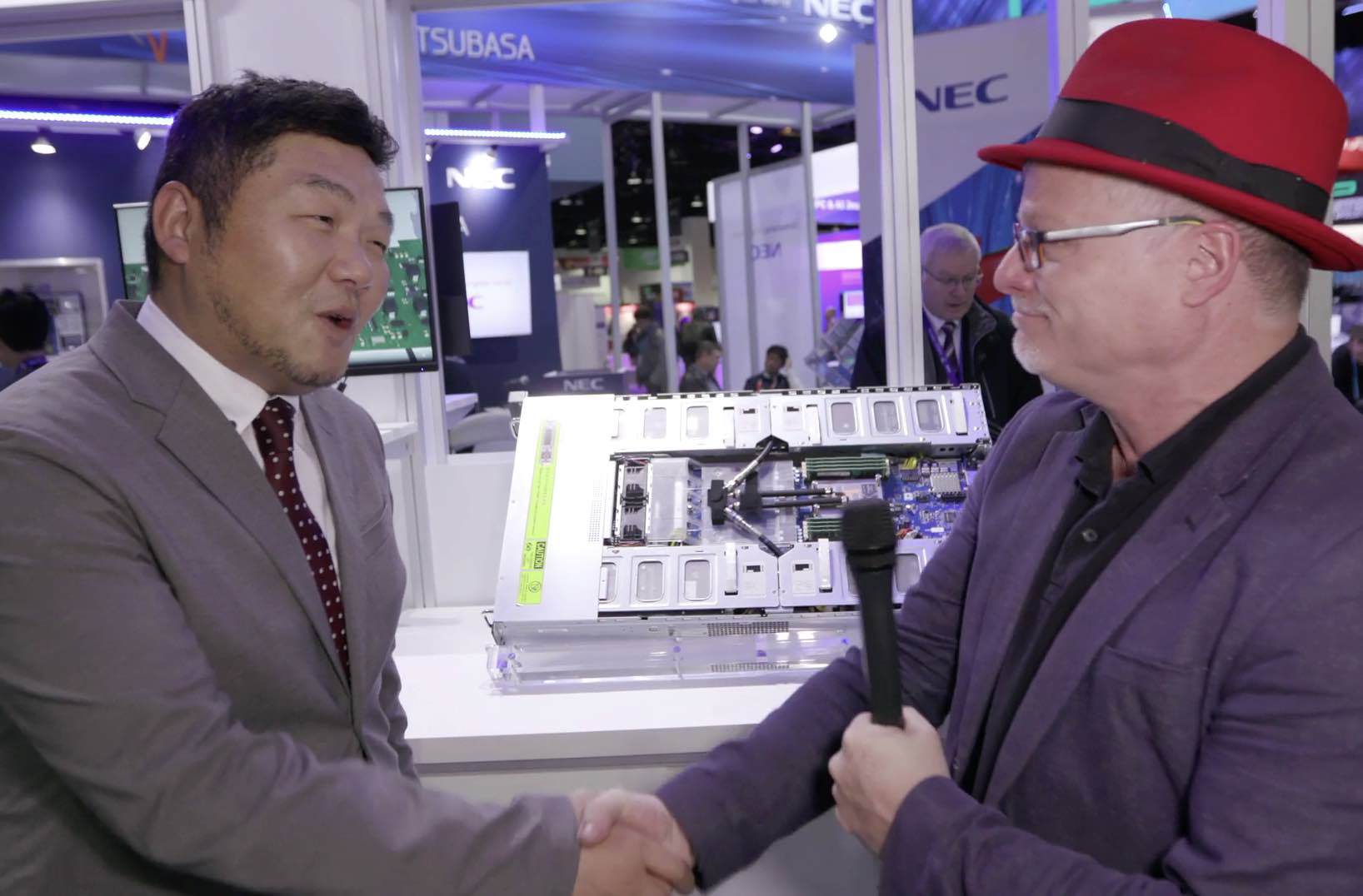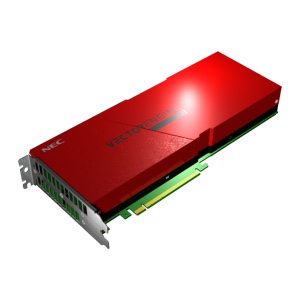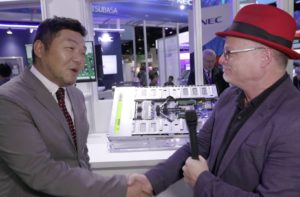In this video from SC19, Erich Focht from NEC describes how the company’s SX-Aurora vector architecture achieves extreme energy efficiency on the HPCG benchmark. He then goes on to provide an update on how NEC is bringing open source machine learning frameworks to their computing platform.
The SX-Aurora TSUBASA is an energy-saving server technology that incorporates large numbers of card-type vector engines combining LSI technology, high-density mounting technology and high-efficiency cooling technology created by NEC over many years in the field of supercomputer development. It offers the world’s best single-core performance and the world’s best single-core memory bandwidth, which is good at high speed processing of scientific calculations and large-scale data. As a result, it delivers highly sustained performance for AI and HPC applications such as weather forecasting, climate modeling, fluid analysis, nanotechnology, and the development of new materials.
In this video from SC19, Shintaro Momose from NEC describes recent enhancements to the SX-Aurora vector computing platform and how extreme energy efficiency helped the company win major contracts with DWD in Germany and the National Institute for Fusion Science (NIFS) in Japan. Scheduled to commence operation in June 2020, the SX-Auroroa TSUBA system has already conducted comprehensive studies of fusion science, including experimental research centered on the Large Helical Device (LHD), and supercomputer simulations of multi-layered and complex physical systems such as fusion plasma.
In a fusion plasma, huge numbers of electrons and ions interact inside an electromagnetic field. These particles follow complex trajectories, and exhibit complex phenomena at a wide variety of spatiotemporal scales. Supercomputer simulation is an essential tool for clarifying the physical mechanisms of these complex plasma phenomena and predicting their behavior. This new supercomputer system will have more than four times the computational performance of the existing system at NIFS. This will make it possible to speed up the simulation of larger-scale and more complex physical processes that have been difficult to model until now. The new system is expected to make a significant contribution to improving the ability to predict plasma phenomena and advancing the progress of fusion science.
The SX-Aurora TSUBASA vector supercomputer from NEC is equipped with 4,320 vector engines in 540 2U-8VE Server units, making it the largest system that NEC has ever supplied. The overall theoretical performance of the system is 10.5 Petaflops, which is more than four times the performance of the current system at NIFS. The main memory transfer rate of the overall system is 5.8 petabytes per second. This is 4.6 times faster than that of the current system, allowing it to run programs that require high-speed data processing. The system also has a large amount of high-speed data storage with a capacity of 30 petabytes configured as a parallel distributed file system that can save the vast quantities of numerical data generated by large-scale simulations. By using this excellent performance to its best advantage, the system will make a large contribution to improving both the quality and quantity of plasma simulation research, and will promote stable functioning and operations for providing powerful support for research at NIFS.
NEC will continue contributing to cutting-edge development by using our vector technology and next-generation high-performance computers that target not only the HPC field, but also industrial applications and AI/big data analytic applications,” said Kazunori Sudo, Senior Vice President, NEC Corporation.






